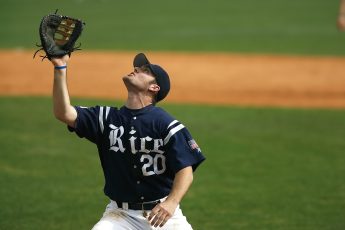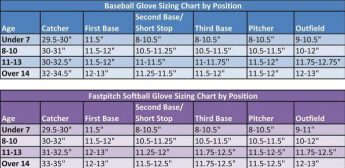Baseball is a game that has been around for centuries; it is one of the most widely followed sports around the globe today. The baseball game has many enthusiasts and lovers worldwide; like other sports, the equipment used in playing the baseball game is essential to the game. One can even say the game’s growth over the years can be attributed to the rules and regulations governing the use of equipment in baseball.
One of the most famous pieces of equipment used in a baseball game known to almost everyone is the baseball bat; the baseball bat is a crucial piece in the game, and without the bat, little or nothing can be done in the game of baseball.
Rules Regarding the Use of a Baseball Bat
During the inception of the game, there was no rule governing the use of a bat, which allowed players to use different bat sizes; however, now the rules guiding the use of a bat have regulated all these things. A baseball player cannot just use any equipment in the game, be it a bat or gloves; the equipment used in baseball by players is concerning the players’ age and the league he or she is playing in.
Learn more about bat compression tester: here
Baseball Gloves
Most people think the bat is the most crucial piece in the game; however that is not, so all equipment used in the game is crucial to the game, another crucial piece in the game is the glove. The baseball glove performs different functions in the game because different gloves are used in the game.
The baseball glove comes in various forms, types, and sizes, including:
- the fielder glove
- the catchers’ glove
- infield gloves
- the first base glove
- outfield gloves
- The training gloves
With this list of different baseball gloves listed above, one will see how crucial the baseball glove is to the game and why it is as important as the baseball bat itself.
There are different forms of baseball gloves; in baseball, the players wear one form of glove or the other. As said earlier, regulating the equipment used in baseball is different, the same thing goes for the glove, and one significant way of knowing which glove to use by a player is the size.
Baseball gloves come in different sizes, so as a baseball player, you should know the different types of glove sizes and, most importantly, know the size of the glove you use as a player.
However, some players or amateurs in the game find it difficult to tell the sizes of gloves they use; this article will help bring that problem to an end as we will highlight and discuss the different types of baseball gloves there is and why knowing the sizes of gloves is essential to you as a baseball player.
Get started with Baseball HERE
Know more about baseball drills for men and youth: here
What Are the Different Baseball Gloves Sizes?

When talking about baseball gloves’ different sizes, one cannot escape how to measure the baseball glove. It is a common question in baseball.
How to measure the baseball glove?
The size of a baseball glove is always etched on the thumb or the glove’s pinky; that is how to determine the size of a glove. However, there are different sizes of baseball gloves; in this segment, we will be discussing all the different sizes of gloves used in playing the game.
The different baseball glove sizes we have can also be referred to as the normal types of gloves we have in baseball; however, each glove can be sized differently.
Outfield Glove Size
The first thing one should consider before getting any glove is your comfort, how comfortable your hands and fingers are inside the gloves; this will lead you to the size you find comfortable. The same outfield glove can be used no matter the position you are playing in the outfield; the outfield’s glove sizes are usually 12 ¼ to 12 ¾ inches.
It all depends on what you like and want as a player; some like the extra ¼ while some don’t; as said earlier, in knowing the size of glove that fits perfectly for a player, they must consider their comfortability first.
Catcher’s Mitt Sizes
The catcher’s mitt is another essential type of glove in baseball; in the case of the catcher’s mitt, some brands make their mitt larger while some make it smaller. When picking a catcher’s mitt glove, one should always try it out as different players prefer different glove sizes, so to find out if you are compatible with the glove or not, you should always try out your mitt.
As a catcher, you have to decide if the larger or smaller mitt is good for you; however, the longer it takes to break a mitt, the more quality the mitt is and the longer it will last.
Know more about baseball: here
Pitchers Glove Size
As a pitcher in baseball, one can use almost any glove of different sizes, from small gloves to outfield gloves. The significant similarity between pitchers’ gloves is the close web so that the hitter won’t see the movement of their fingers in the glove and won’t be able to predict the type of pitch the pitcher wants to make.
A pitcher’s glove is mostly used in disguising the type of pitch a pitcher wants to throw.
Third Base Glove Size
The third base glove is slightly bigger than the second base; the major reason for this is that balls are hit very hard, and the more leather to knock it down, the better.
In the third base glove size, the most common size of glove is the 11 ½ or 11 ¾ inches glove; occasionally, you can see a player using the 12 inches glove; however, that is a large glove for a third base.
Conclusion
As a baseball player, you should know the size of a comfortable glove; the sizes of gloves and comfortability matter a lot in picking a glove.
Most baseball glove sizes are always etched on the thumb or the pinky; as a player, you should always check the size of gloves that are comfortable for you to know your gloves’ size.


